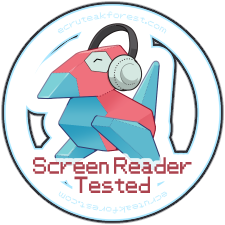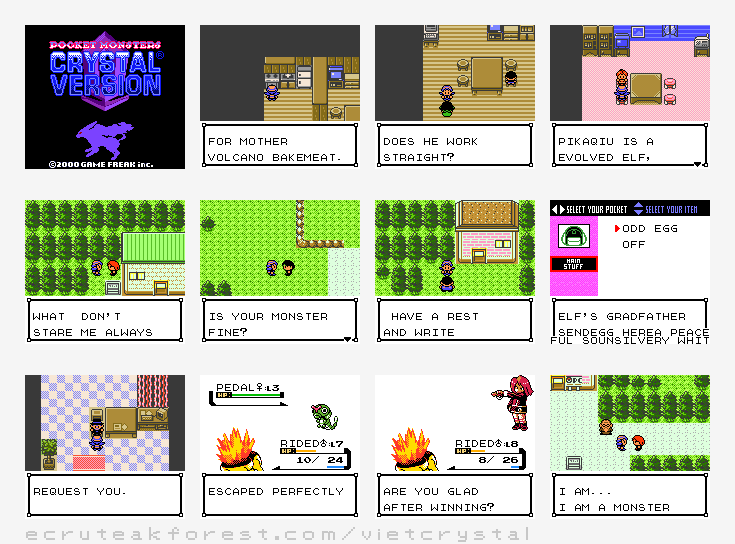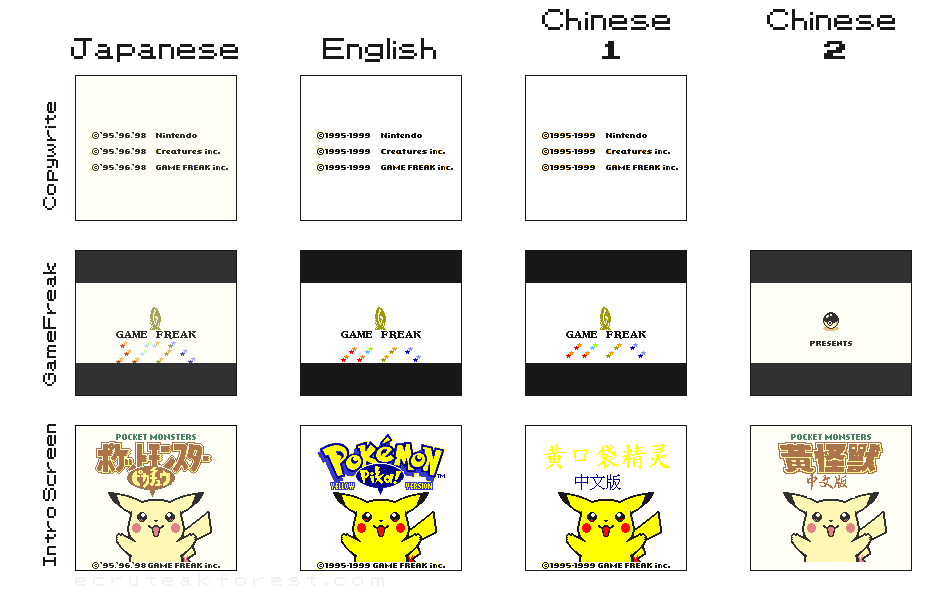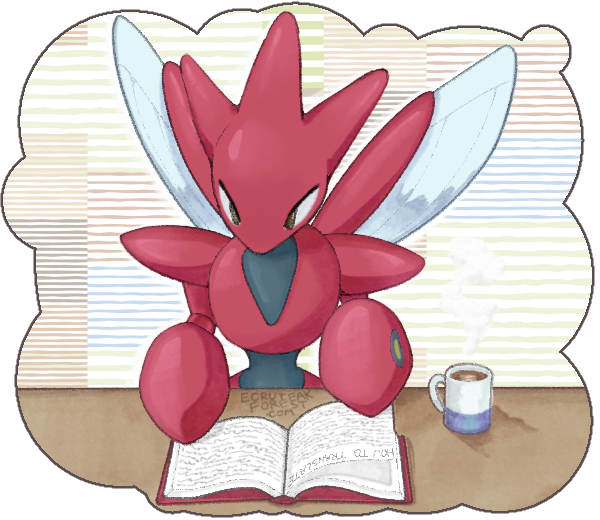
Pokémon Vietnamese Crystal
- illust.
- by
- REND
Finding the origin of Pokémon "Vietnamese" Crystal

This article is "in progress" - expect semi-regular updates as the project progresses.
Last update; 16.11.2023
Update Summery: Alt text added to all images.
The colloquially known Pokémon Vietnamese Crystal is a top contender for "bootlegs that need no introduction", but for those unaware, it is a copy of Pokémon Crystal which was purportedly translated from Japanese to either Chinese or Vietnamese, then into English. Also found in cartridges marked as "Pokémon Special Pikachu Edition Crystal Version", the first major showcase of the game online was during the 2011 charity marathon ExtraLives, a viewer having sent in a copy of the poorly translated game claiming to have purchased it from Vietnam. (Unfortunately, I haven't found any archived footage of it being played at this event as of yet). Shortly afterwards, the game was LetsPlayed by the now defunct group DeliciousCinnamon on YouTube where it gained popularity and spread. From its appearance during the ExtraLives marathon and the DeliciousCinnamon playthrough, as well as subsequent playthroughs on forums like SomethingAwful, it quickly grew in infamy and spawned several small memes and repeated phrases.
Despite its name and origin, there is more evidence that supports the game was originally an unlicensed Chinese translation rather than Vietnamese. The usage of the Chinese greeting "wei", Team Rocket being referred to as "Black Society" (a literal-translation of a Chinese term for the mafia), and perhaps the most notable example, the usage of the word "fuck". Essentially, there is a Chinese character which can be translated as "to do", "to put", as well as a number of other things, which early machine translation would often render as "fuck".

Click for Image Alt Text
Twelve screenshots laid out in a four by three grid, each one showing a different screenshot of Pokémon Vietnamese Crystal.
Screenshot 1 shows the opening screen. On a black background, the text reads "Pocket Monsters Crystal Version" and "Copywrite 2000 GAME FREAK inc.". Between them is pixel art of the Pokémon Suicune in silhouette.
Screenshot 2 shows the player interacting with an oven, the dialogue reading "FOR MOTHER VOLCANO BAKEMEAT".
Screenshot 3 shows the player talking to an NPC, the dialogue reading "DOES HE WORK STRAIGHT?".
Screenshot 4 shows the player talking to another NPC, with dialogue reading "PIKAQUI IS A EVOLVED ELF,"
Screenshot 5 shows the player character talking to the rival character, the dialogue reading "WHAT DON'T STARE ME ALWAYS".
Screenshot 6 shows the player talking to an NPC, with dialogue reading "IS YOUR MONSTER FINE?".
Screenshot 7 shows the player talking to an NPC, with dialogue reading "HAVE A REST AND WRITE".
Screenshot 8 shows the bag interface, the item ODD EGG is highlighted, and the description text is miss-spelled and overwriting the dialogue box graphic, reading "ELF'S GRADFATHER SENDEGG HEREA PEACE FUL SOUNSILVERY WHIT".
Screenshot 9 shows the player talking to an NPC, with dialogue reading "REQUEST YOU.".
Screenshot 10 shows the battle interface, with the players Pokémon "RIDED" (Cyndaquil) fighting a "PEDAL" (Caterpie), the textbox reads "ESCAPED PERFECTLY".
Screenshot 11 shows the win screen against the rival character, with his dialogue reading "ARE YOU GLAD AFTER WINNING?". Screenshot 12 shows the player talking to the rival after the previous battle, with his dialogue reading "I AM ... I AM A MONSTER"
Unlicensed Chinese translations of Japanese games are nothing new now, and weren't back in the early 2000s, but with a bit of work we might be able to narrow down where "Vietnamese Crystal" really came from. I've seen one or two other people around the internet being curious about this, but I haven't found anyone trying to essentially retrace the steps of the translation. It is complicated somewhat by the fact that the Japanese to Chinese part of the translation could have gone one of two ways; into Traditional Chinese, or into Simplified Chinese, both of which are quite different. Skipping over the complexities, in extremely broad strokes, Simplified Chinese is written in China, and parts of Malaysia and Singapore; whereas Traditional Chinese is written in Hong Kong, Macau, and Taiwan.
With that in mind, there are three ways we can go about this;
- We find copies of the (unlicensed, Game Boy) Chinese versions of Pokémon Crystal, and then use machine-translation software that was popular around ~2001 to translate selected text into English, and compare them with the "Vietnamese Crystal" versions
- We use the 2018 Virtual Console translations from Hong Kong and Taiwan (an official translation, but only available from 2018 onwards), then use machine-translation software that was popular around ~2001 to translate selected text into English, and compare them with the "Vietnamese Crystal" versions
- We take a Japanese copy of Pokémon Crystal, use ~2001 translation software to translate it into both Simplified Chinese and Traditional Chinese, and then use the software again to translate them into English, and compare
There's a few issues with this - we don't actually know how many times Pokémon Crystal was unofficially translated. There are a small handful of Chinese translations floating around online - but given the nature of this, we don't know who translated these, or when, or if they're different versions - or more, I certainly don't. Like all languages, Chinese is complex, and I know very little - so we're going to be fumbling in the dark a little.
We are also assuming the people who created the translation to be lazy and using machine translation at every stage, rather than sitting down and line-by-line human translating the game. It's not unlikely that the people who translated the game from Japanese to Chinese are a separate group from the people who then translated the game from Chinese into English - so one step could be machine translated and the other not.
And as you may have noticed, I haven't mentioned a Vietnamese translation of the game - that's because, simply put at the time of writing this, there isn't one. Pokémon Crystal wasn't released officially in Vietnamese, and as far as I can find there are no rom dumps online of an unofficial Vietnamese translation of the game (that does not mean one never existed, of course!). So for the time being, let's run with the theory that "Pokémon Vietnamese Crystal" was a Japanese to Chinese to English translation.
Note; I'm not the first person to believe or state that Vietnamese Crystal likely originated from a Chinese translation of the game!
Many others before me have mentioned this. The point of this section isn't to claim ownership over this as some revolutionary new idea, but more to try to put some proof forward.
This is an ongoing project, so updates will be marked with a horizontal bar, and a date of the update addition
09.11.2023 - November 9th, 2023
Update 01
Whilst proof reading this out to my partner, we got talking and it prompted me to find more information on the previous claim in an earlier paragraph - namely the particular Chinese character which mistranslates to "fuck frequently. Upon finding a very useful guest article related to this exact phenomenon on Language Log, the blog of American linguist Mark Liberman (the article itself written by sinologist Victor Mair), it's provided me with two very useful key pieces of information;
- The strange phenomenon of "fuck" appearing in Chinese-to-English translations is likely due to the character in Simplified Chinese, 干, having multiple meanings (more information in the above Language Log entry).
- The presences of this issue occurring in Chinese-to-English translation software, with one being noted in the article - Kingsoft 2002
This narrows down our search tremendously - the English translation was likely created off of a Simplified Chinese version of Pokémon Crystal. And thanks to someone over on the Internet Archive just happening to have stumbled upon and archived a copy of Kingsoft FastAIT2002 a few months ago, we can move onto our next steps.
Additionally, I had been looking on the Chinese-speaking side of the internet to try to find any leads there, and came across a very interesting post on the Question-and-Answer website, Zhihu. Asked by the user 苟或潜水中, "Why is the Chinese translation of Pokémon Crystal so weird?" - some key points I will loosely translate here;
"Judging from the font used, the first-gen Chinese translation and the second gen Chinese translation should have been created by the same Hong Kong-based pirate group. There is also an unusual translation of Pokémon Red and Pokémon Yellow produced by a Taiwanese pirate group."
"In the earlier Chinese versions of Gen 1, pirate [translators] relied on machine translation [to translate from the American version of the game], with the exception of the Taiwanese translation of Pokémon Red & Yellow which were directly based off of the Japanese version."
Note; for those reading the original, untranslated posts, the term "D商" here is a slang term for, essentially, bootleggers, as the term used for piracy/pirates has been censored on certain websites.
Pointed out is that the intro screen in the Chinese bootleg translation of Blue reads "(C) '95, '96, '98 GAME FREAK inc.", which is the same as the ENG version of Red/Blue. The Japanese version of Blue reads "(C) 1995, 1996 GAME FREAK Inc." and the Japanese version of Red & Green reads "(C) 1995 GAME FREAK Inc." They also point out that in the Chinese bootleg translation, "Cry" (as in, Pokémon Cry) is written with the term for "Weeping Crying", which is a much easier-to-make translation mistake if going from English to Chinese, than Japanese to Chinese (with the Japanese word used being なきごえ (nakigoe) - eg "roar", "sound [of an animal]", "cry of an animal".
Hover Image to Enlarge

Click for Image Alt Text
An image broken up into a four-by-three grid comparing the introduction screen for Pokémon Yellow in the official Japanese, official English, and two unofficial Chinese versions. The top-most row displays the copywrite screen, which is the same format in the Japanese, English, and Chinese-1 versions, however is not present in the Chinese-2 version. The Japanese version copywrite reads "'95, '96, '98", whereas the English and Chinese-1 reads "1995-1999". The middle row displays the GameFreak logo screen, which is the same in Japanese, English, and Chinese-1, however the "GAME FREAK" logo is replaced with an illustration of a Poké Ball and the word "PRESENTS" in the Chinese-2 version.
The bottom row shows the intro/press start screen, in the Japanese version the text "POCKET MONSTERS" in English is displayed, followed by ポケットモンスター ピカチュウ "Pocket Monster - Pikachu" in Japanese; in the middle of the screen is an illustration of the Pokémon Pikachu with it's arms outstretched, and below reads "Copywrite (mark), '96, '96, '98 GAME FREAK Inc.". All subsiquent images feature the same illustration of Pikachu, with the English version's text reading "Pokémon Yellow Version", with a speech bubble atop Pikachu's head reading "Pika!". The copywrite text is writte as "Copywrite (mark) 1995-1999 GAME FREAK Inc.". The next image, for Chinese-1, reads 黄口袋精灵中文版 (Pokémon Yellow - Chinese Version, followed by "Copywrite (mark) 1995-1999 GAME FREAK Inc.". The final image, the intro screen for Chinese-2, reads "Pocket Monsters" in English, followed by "黃怪獸 中文版" (Yellow Monster - Chinese Version).
Hover Image to Enlarge

Click for Image Alt Text
An image broken up into a four-by-three grid comparing the introduction screen for Pokémon Red in the official Japanese, official English, and two unofficial Chinese versions. The top-most row displays the copywrite screen, which is the same format in the Japanese, English, and Chinese-1 versions, however is not present in the Chinese-2 version. The Japanese copywrite date reads 1995, whereas the English and Chinese-1 reads as "'95, '96, '98". The middle row displays the GameFreak logo screen, which is the same in Japanese, English, and Chinese-1, however the "GAME FREAK" logo is replaced with an illustration of a Poké Ball and the word "PRESENTS" in the Chinese-2 version.
The bottom row shows the intro/press start screen with sprite artwork for the protagonist/player character and the Pokémon Charmander standing side-by-side, in the Japanese version the text reads the kana for Pocket Monsters - - followed by "Pocket Monsters Red Version" in English. The second image is the English version, which reads "Pokémon - Red Version". The next is Chinese-1 which reads "中文版紅口袋精灵" (Chinese Version - Pokémon Red). The Chinese-2 version reads "紅怪獸 中文版" (Red Monster - Chinese Version). Noteworthy is that the sprites displayed on the screens do not all match - the sprites for Japanese and Chinese-2 are the same, and the sprites for English and Chinese-1 are the same, indicating that Chinese-2 was built off of Japanese Red, whereas Chinese-1 was built off of English Red.
"The Hong Kong Pirate's Chinese version of Crystal was produced [relatively] late, probably due to SARS. It was probably early 2003 when mainland players got a version of Crystal. By the time I heard about Pokémon Crystal, it was autumn 2003, and by that time Chinese (bootleg) versions of Pokémon Ruby and Sapphire were already released."
Further down, they go on to mention that the Hong Kong Pirates released two versions of Pokémon Crystal; one which was base-game accurate, and one where the in-game Celebi event had been modified to trigger without the need to attend an in-person event - however this seemed to have caused a number of bugs, which the bootleggers attempted to fix during subsequent printings of the cartridge. As an aside, they also talk about a playground rumour they believed that the Chinese version of the game was bigger, so could fit a third map, based around space (so Johto, Kanto, and Space). Some things are universal.
User DreamSn - who was working on an analysis of the Chinese localizations of Pokémon G/S/C as well as being part of a fan-translation of Pokémon Crystal, added their personal conclusion that the translators were likely "in the Guangdong area, but not in Hong Kong". Checking out that aforementioned analysis, DreamSn seems to have been doing a similar search as us - though they're trying to work out where one of the Chinese bootleg versions was from - I was reading through their page and was surprised to find towards the end they mention Vietnamese Crystal! Saying (wording order adjusted for clarity);
"Judging from the resulting translation, [Vietnamese Crystal] likely has a connection to the Chinese bootleg version".
Note, as mentioned before, there is a recent Pokémon Crystal Chinese translation created by a group including DreamSn - released around 2020. Coincidentally, another translation of Crystal into Chinese was completed around the same time, by sss888. When looking into dumps of Chinese-language versions of Pokémon Crystal, these also show up quite frequently!
Using archives of Pokémon fansites from 2000 through to 2017 hosted in Hong Kong and Taiwan, I've found a number of different copies of Chinese translations of Pokémon Crystal floating about. First call is to compare all of these versions to check whether they're different - for this I used a Hex comparison tool rather than manually checking each one, as that would have taken substantially longer. The earliest copy of (Chinese) Pokémon Crystal I have, I can verify to the year 2003. There are records of a Chinese version being available for download as early as 2002, however unfortunately I have not managed to find any working download links on the Wayback Machine that I can 100% confirm were uploaded prior to 2003. During my search, I also found an unofficial English-translated version of Pokémon Crystal that is very close to the offical translation - which may warrent some investigation some other time.
At the moment, I have one copy of Crystal in Simplified Chinese that I can verify to pre-2017, and one copy of Crystal in Traditional Chinese which I can verify to 2003.

End of article so far
Current next steps: translating selected texts from Pokémon Crystal back and forth
Actually, I'm preparing for a convention and a concert, so the next update may be a while away...!